I’ve been feeling rather lukewarm about Bushiroad’s design and balancing team for quite some time now. I don’t think this is too uncommon of a sentiment among players. Game design is difficult, and I can understand the complications with making and ensuring cards are fair in the current game. However, Bushiroad is relatively well known by the community to always be on the edge of pushing certain designs in its cards onto the players. There are some notable controversial designs, but it has been a little while since Bushiroad’s latest experimental push.



MKI/W126-061R 缶詰め合宿の夜に 杏菜 (center)
MKI/W126-099CR そういうとこだよ (right)
Released on Twitter recently with the upcoming Makeine set, Bushiroad is once again printing a card that is breaking the game’s own fundamental rules. Now, this isn’t exactly new for Bushiroad. They have a record of printing cheated cards that get around the rules or break design philosophy with low costs. From cards that can be played at level one or higher without colour requirement to printing costless cards with soul icons balanced by the fact that they have low base power (they usually have text that grants them power anyways), Bushiroad has long been “breaking” the fundamentals of their game.
This isn’t uncommon in card games, but usually, cards that do bend the rules a little do have heavy costs to them. This was the philosophy back in the day, almost a decade ago, with CHANGE being one of the primary examples. Higher level cards are restricted by your level requirements. For instance, you need to be level two to play level two cards. However, there was a built-in mechanic to get around these rules called “CHANGE” which needed you to pay a generally heavy cost to bring out a higher level card. This changed sometime in the mid 2010s when CHANGE was essentially phased out. The solidification and arrival of “standby” in particular essentially killed off the old mechanic. Now, instead of having to pay a cost, the slamming or the triggering of said standby climax essentially spawned a higher level card from your waiting room for “free.”
So, what is the problem this time with Anna Yamada (cards shown above)?
Anna essentially transforms the game and changes the fundamental loss condition in Weiss Schwarz. Normally, all players lose when they reach level four, but now, with Anna’s climax combo, you have another level buffer. This means that the player playing the Anna above only loses when they reach level five instead of four. In all fairness, given the costs of Anna and the power of finishers in the current game, I personally doubt this is some sort of great menace to the game itself. However, it sets an unhealthy precedent. If this card becomes a norm, Bushiroad may just extend the rework of the game to push up to level five instead of four, which comes with a number of its own repercussions. We’ll get back to this later.
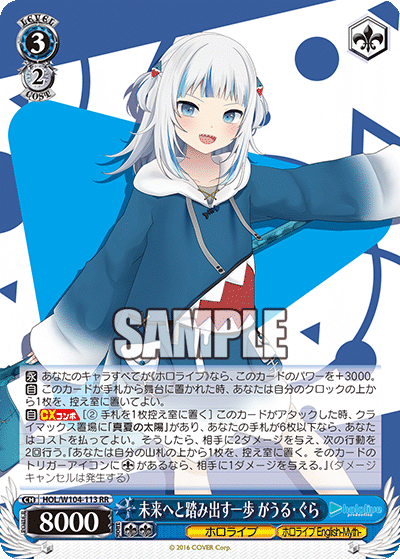
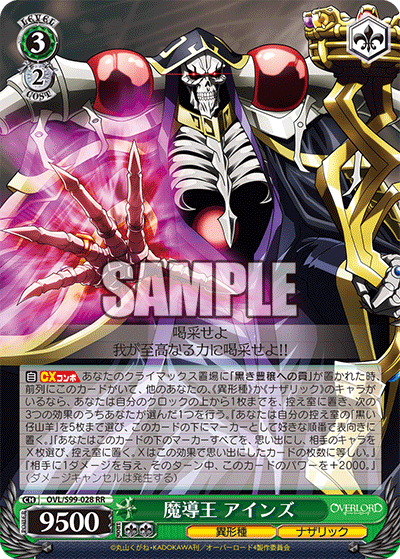
To really understand the issue, we have to dive into its roots. The best way to do so is to look back at the past of the game and understand the history of the game itself. As many of the more recent players may already know, the damage in the late game is reaching abnormal and incredulous levels of nonsense. Just a few formats before, cards like Gura above dealt a total of four damage instances, including their attack. Gura’s combo essentially, under the right conditions, would deal two damage, followed by two ping ones, and then her swing (which was also usually a soul icon), dealing a potential level in a single swing. Ainz, shown here, isn’t much better. Although Ainz himself only has two damage instances with his combo, his combo with the events in his deck also deals a potential of up to five more damage instances. In retrospect, Ainz can hilariously deal more damage than Gura under the right conditions.
What does this mean? There is far too much damage in the late game. These cards are also from past formats. The modern finishers are not much better. As outlined in an earlier article, one of the key problems is Weiss has devolved in the late game to a race to get to three first. The goal of doing so is to kill your opponent before they even have a chance to employ their finisher simply because the chance of their finisher killing you immediately on the spot without you having a turn at three is extremely realistic.
So, what is Bushiroad’s solution? With Anna, you have another level now. That means your opponent must put in more effort into ending you. They need to increase their damage output to overcome your extended life bar. This is not addressing the core problem. Bushiroad isn’t reducing the power of finishers but making it slightly more annoying for players to end each other. When a single level three finisher can deal a full level in a single swing potentially, the question becomes, what’s the point of even giving a buffer to level five?
In short, Bushiroad, through this card’s reveal, has inadvertently told the community that they aren’t going to really address the raw power of finishers in the game. With the advent of Weiss Schwarz Rose and the new extended format, it feels more like Bushiroad is just trying to shift eyes away from the direct problem and simply walk away from the conversation as a whole. This level five buffer on Anna feels more like a band-aid solution that just generates additional problems.
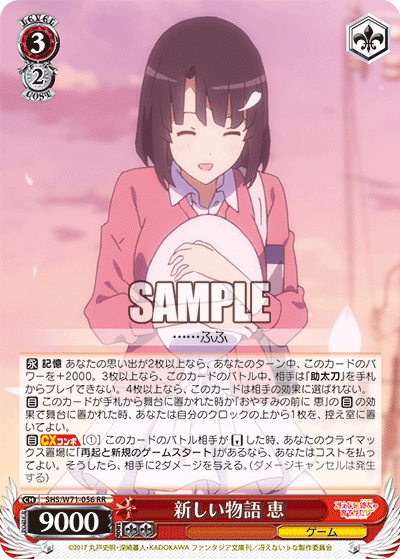

Back in 2019, before the COVID-19 pandemic and the eventual take-off of standby, Weiss Schwarz was in a very different place. Weiss Schwarz was a game of compression. Games were long and involved many cancels. Players highly valued cards such as freefresh to reset their deck back to a better state filled with cancelling climaxes. Finishers dealt one additional instance of damage with their swing. That was all. The game was a game of battling resources. Players were trying to minimize the sizes of their decks while paying out any climaxes. Turns were commonly cancel battles with players often dealing chip damage to each other with two or more cancels each turn, once they had reached sufficiently compressed decks.
Looking back then, it feels like a paradise compared to now in some ways. There were no loose cards with random soul icon triggers. Standby was barely on its legs. Finishers were fair. But this only lasted for a short while…
What was the problem? Games were long. Far too long. Especially for Bushiroad’s standards. If it isn’t clear already, Bushiroad hates stall and elongated games. This meta of slow play and back-and-forth wasn’t it for Bushiroad’s vision. And in some ways, they were correct. So what happened? The designs talked about at the beginning of this article were pushed into the game. Random soul icons on cards made damage much more prevalent. Rather than expecting a single point of damage or two with a climax, cards could randomly swing for three or four, especially if your opponent had an open lane. Standby allowed for finishers to come out early, not just providing a potential game-ending ability as early as level two, but bringing out cards that had base two soul to push your opponent to their demise faster. And furthermore, compression became less and less relevant.
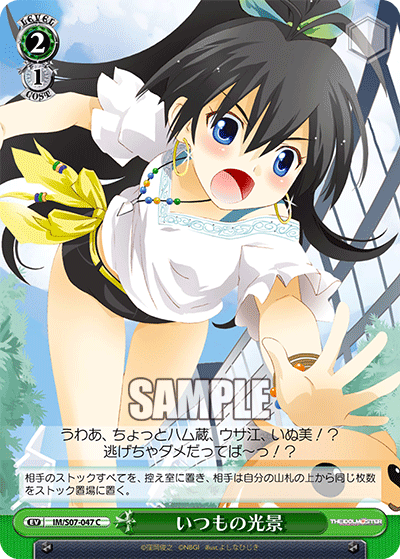
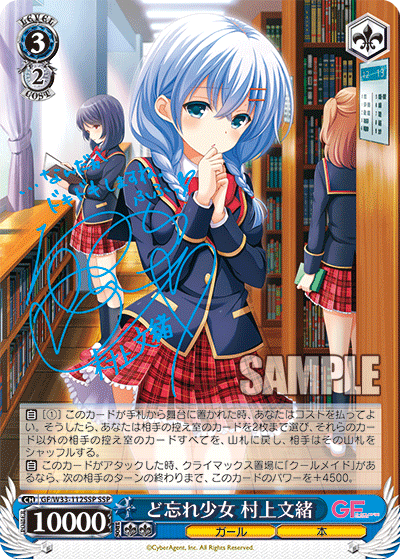
This was a two-fold problem that came about due to the reprint and normalization of two rather old profiles dubbed “decompression tools.” Stock flush essentially made it so that your opponent’s compression didn’t matter anymore or was more of a bane than anything else. Since their stock would most likely be clean (have no climaxes) and their deck would be the opposite, you would force an effective swap, taking out all that clean stock and filling it potentially with climaxes (I have had seven pushed into stock this way). The other was Fumio, which became notorious for the “stock flush + Fumio” combo. Fumio would refresh your opponent’s deck with one less climax, but now with stock flush in the mix, your opponent would either lose all their climaxes and then refresh into an empty deck, or you would refresh them first to then stock flush all their climaxes out.
As a matter of fact, because of this notorious combo, most series do not have access to these two pairings together ever.
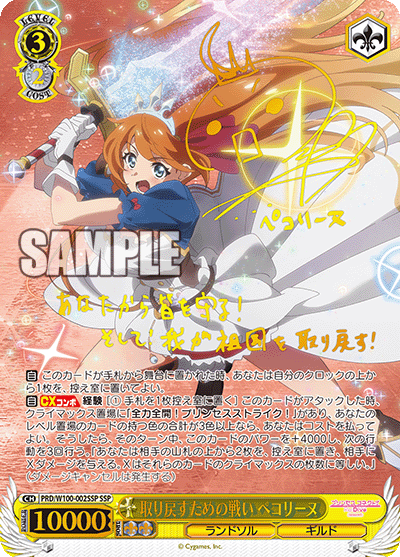

SFN/S108-003SP-SP 旅立ちのきっかけ ヒンメル (right)
The second wave of issues was the prevalent printings of “Icy Tail” decks. Now, Icy Tail in itself was always considered a rather mediocre finisher at best. But the problem with Icy Tail was that this was a finisher that would punish your opponent’s deck state rather than rely on your own resources and deck building. This has led the profile to become notorious for scam wins, as you are rewarded for punishing a player that is decently compressed deck-wise. On top of the constant printing of so-called Icy Tail finishers, the newer version of Icy Tail now counts each individual climax as a separate instance rather than combining the total number of climaxes into a single instance. That means that if you revealed say three climaxes from your opponent’s deck, you would deal three different instances of damage.
Personally, I think this has actually degraded the skill floor in Weiss Schwarz as these types of designs heavily reward you as the player for seemingly punishing a player who has put their deck into a good compressed state.
However, this creates this unprecedented duality. For a player to live, they must have climaxes in their deck to cancel damage. However, having climaxes in your deck is a liability as they also cause you to take more damage. Yet, given the current landscape of the game, it is not uncommon to hear chatter of how decompressing your deck has helped you survive against such finishers. This in itself feels like an oxymoron of a situation.
So that is where we are now today. By maintaining the general motif that the game is “casual”, Bushiroad avoids responsibility for the monstrous designs and direction that it has taken the game in the past few years. After all, the idea is that if the game is casual, why would it matter that certain concepts and parts of the game are unfun or problematic? “Just scoop up your deck and start a new round.” There is a sense of maliciousness in the push for official thirty-five minute rounds, the suggestion that games are now faster-paced, allowing players to more quickly zoom from one game to another.

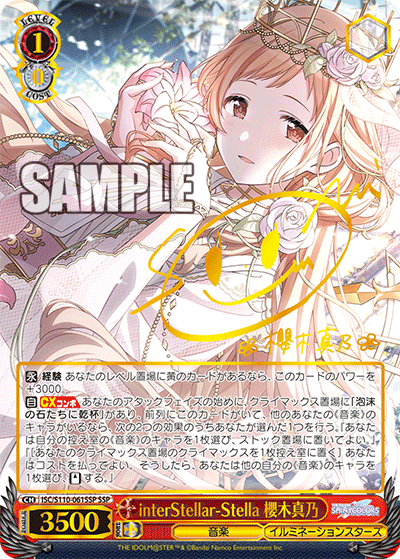

ISC/S110-061SSP-SSP interStellar-Stella 櫻木真乃 (center)
SBY/W114-049ABR-ABR 君と過ごした一年間 桜島 麻衣 (right)
All-in-all, this is how I see it. Bushiroad is dumping their responsibility for the changes to the game that they have purposely made onto the players. Rather than addressing these problems, they would rather suggest players just scoop up and just play more games, letting RNG reduce and hide these problems into mere coincidences. Rather than taking ownership for these problems, and given the general direction and restrictions the game has gone through in the past few years, it is evident that Bushiroad is throwing out mechanics without proper testing with players living under the consequences of Bushiroad’s decisions.
Each and every format comes with its own challenges with certain series and decks getting the spotlight. However, in the last few years, I would think that it wouldn’t be egregious for me to say that the powercreep has been dialed up to a ten. From decks like Sword Art’s Alice piles to the dominance of Shiny Colours, the game has felt constantly teetering on the edge of higher tiered decks choking out the chances for other series to have a chance on the playing field. The ban list is constantly pushed with repetitive changes to accommodate the newest broken mechanic of the season.
However, I don’t believe the game needs to be this way. It isn’t the responsibility of the players to constantly have to call out and perform maintenance and balance checks for Bushiroad; to put it simply, Bushiroad needs to be reminded by the player-base that they need to do better than this.